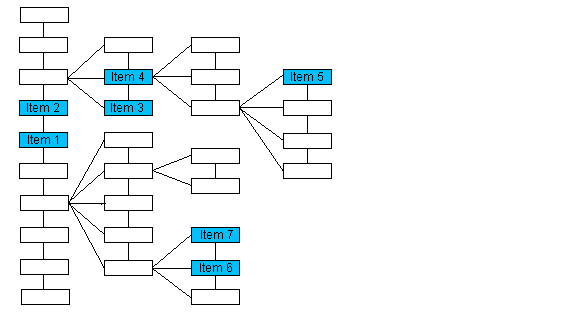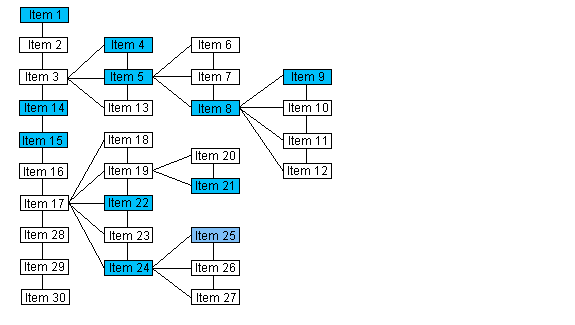| Visual Basic (Declaration) | |
|---|---|
Public Function GetPreviousKey( _ ByVal element As DicomElement, _ ByVal tree As Boolean _ ) As DicomElement | |
| Visual Basic (Usage) |  Copy Code Copy Code |
|---|---|
| |
| C# | |
|---|---|
public DicomElement GetPreviousKey( DicomElement element, bool tree ) | |
| Managed Extensions for C++ | |
|---|---|
public: DicomElement* GetPreviousKey( DicomElement* element, bool tree ) | |
| C++/CLI | |
|---|---|
public: DicomElement^ GetPreviousKey( DicomElement^ element, bool tree ) | |
Parameters
- element
- An item in the Data Set. The item in the Data Set that immediately precedes this item will be returned.
- tree
- true to evaluate the Data Set as a tree; false to evaluate the Data Set as a list.
Return Value
The item in the Data Set that immediately precedes the item specified by element, or a null reference (Nothing in Visual Basic) if there is no item preceding element (element is the first item in the Data Set).
| If the passed object points to: | The method returns an object pointing to: |
|---|---|
| Item 1 | Item 2 |
| Item 3 | Item 4 |
| Item 5 | null |
| Item 6 | Item 7 |
If the Data Set is evaluated as a list, the previous item in the list is returned. Please note that the numbering of the items in the following illustration does indicate the order of the items when the Data Set is evaluated as a list.

| If the passed object points to: | The method returns an object pointing to: |
|---|---|
| Item 1 | null |
| Item 15 | Item 14 |
| Item 5 | Item 4 |
| Item 9 | Item 8 |
| Item 22 | Item 21 |
| Item 25 | Item 24 |
The following methods will also help you navigate the Data Set as either a tree or a list:
If you evaluate the Data Set as a tree, you can also use the following methods to navigate the tree:
Target Platforms: Microsoft .NET Framework 2.0, Windows 98, Windows NT 4.0, Windows Millennium Edition, Windows 2000, Windows XP Home Edition, Windows XP Professional, Windows Server 2003 family




